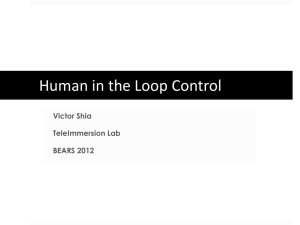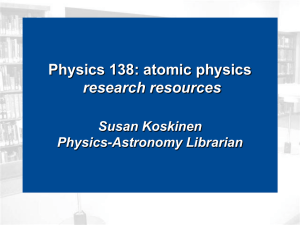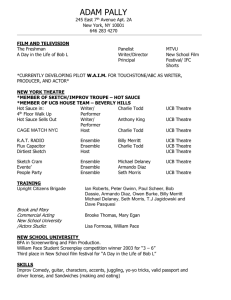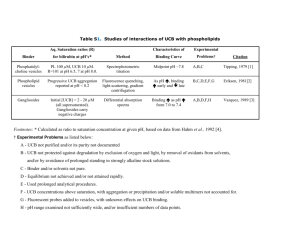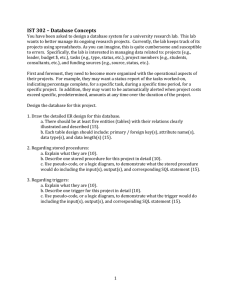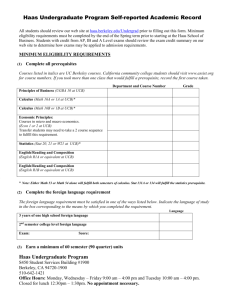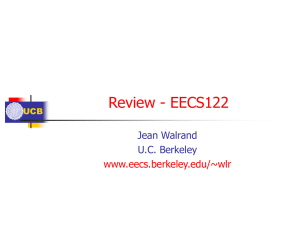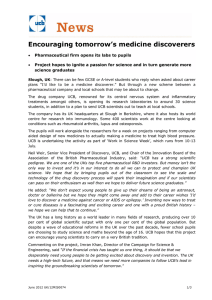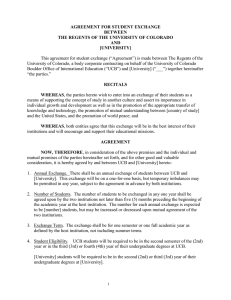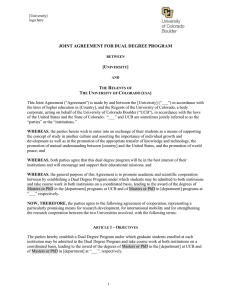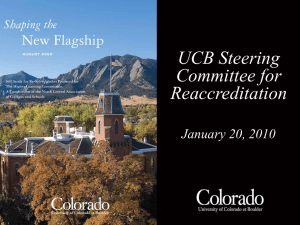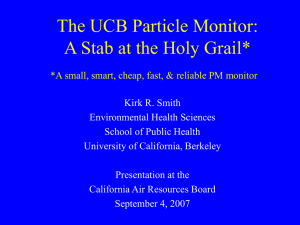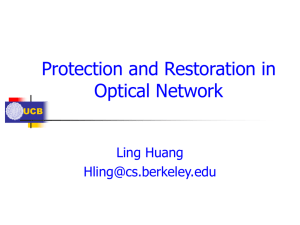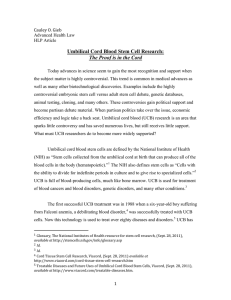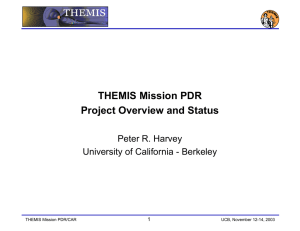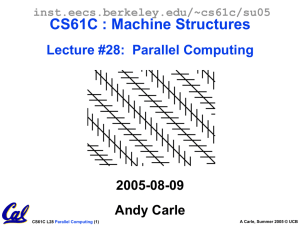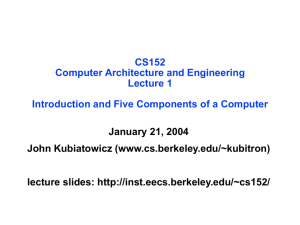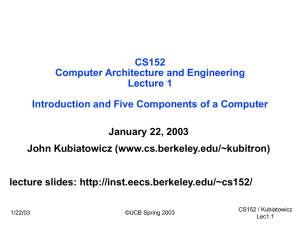UCB
advertisement
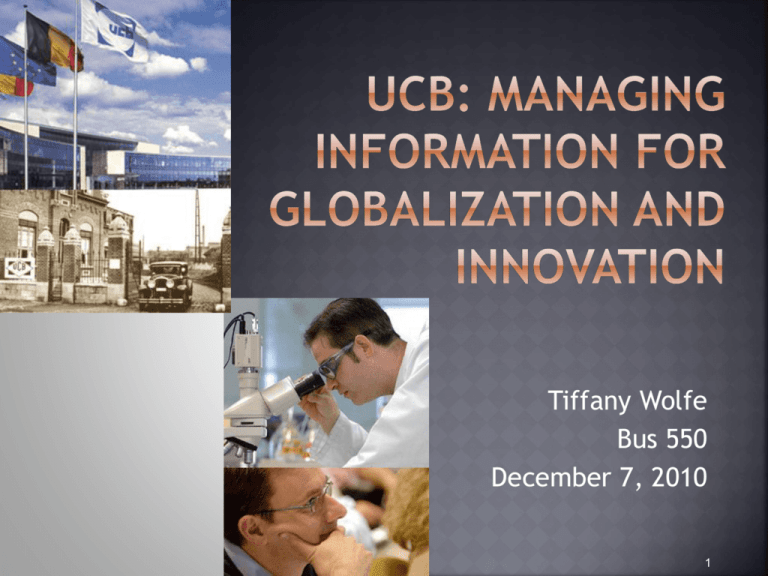
Tiffany Wolfe Bus 550 December 7, 2010 1 Established in 1920 in Brussels, Belgium Expanded to the U.S. in 1930 2009 total global revenue € 3.1 billion Net sales 51% Europe 35% North America 14% other Originally three sectors Film (1930-2004) Pharmaceuticals Chemicals 2 Films BOPP (biaxially-oriented polypropylene) and cellulose films for specialty packaging, labeling, graphic arts and industrial products. Food and beverages, labels, security products, industrial membranes, health, and pharmaceutical industries € 396 million in sales in 2001 Chemicals Polyester resins (molding and toner) Acrylic resins (hard plastics) € 677 million in sales in 2003 Pharma € 1.4 billion in global sales Majority of sales are from Zyrtec 3 Job 1991-Corporate Auditor 1993-Management Controller of Pharma Operations and business groups depend upon IT 1996-Responsible for Pharma MIS 1997-Responsible for central services across Belgium Titles HR, IT infrastructure 1998-Administrative and group IT Director 2000-Administrative and IT/IS Director End of 2000- Member of the Senior management Team 4 Information technology/information system (IT/IS) Organization Redundancy Inconsistency Inefficiency 5 Role Information Technology Operations of IT/IS: Establish an “efficient, robust, and strong motorway” of information that would help support business processes, and improve the end users’ productivity. Information Systems Development Understand business requirements and priorities Develop, implement, maintain, and support IS to meet these requirements. 6 This global vision concerned: Infrastructure Hardware/software Communication Created Global IT/IS Standards: To share experience and develop synergies across the group To reduce heterogeneity, inconsistencies, and hidden costs To improve communication and cost effectiveness 7 Single email system Standardized hardware and software systems Oracle for database application Microsoft Office for desktop productivity Compaq desktop PCs NT 4 Operating System Contract negotiations Group Contract IT/IS Manager Group vs. each sector; individually Cost savings of € 2.7 million by 1999 8 1996 IT/IS activities were independently initiated within each sector and location. Inconsistency Redundancy Higher cost 2001 Wanted to establish global IT/IS standards Develop synergy across groups All report to Damien Improve communication across groups Reduce inconsistency 9 1st step in improving operational support system Hub of the UCB global network Upgraded their computers Created a central computer room Underground 300 servers ran production applications From all sectors and geographies Back-ups were handled automatically by a new robot-driven system Server operations and monitoring were outsourced Several miles away from the nearest UCB facility Back-up: original computer room 10 In No computers One person covering the call center Only spoke one language In 1998 Six people Staff spoke two languages In 1993, first began 2002 Centralized database Supported 200 applications Call center staff spoke 7-10 languages High turnover 11 Regional America, Asia, and Europe Report directly to Damien Use corporate standards when appropriate Local needs of various business groups Variations in technology Global Operations Operations Concentrated on infrastructure that applied to all sectors and regions Such as WAN and corporate network standards 12 Global Development Developing and delivering technological solutions in use by all sectors and regions, such as PeopleSoft Sectorial Developing and delivering applications for specific sectors, such as knowledge management for Pharma Major Development Is Projects: Knowledge Management 3R Portal Project 13 Past 60% of all documents were in foreign languages All on paper Present Now all written in English All critical documents are digital They have staff dedicated to indexing and translating documents: Notes from physicians Published scientific papers related to drug development- competitors UCB docs- research analysis and in house research reports 14 They had robust security Easy-to-use folder organization for storing and retrieving their 90,000 documents Pharmaceutical industry More money was spent on the creation of knowledge than on the equipment used to produce the products developed from that knowledge Important because pharmaceutics is a knowledgebuilding process Laws related to pharmaceutics, which vary by country, require companies to keep documents associated with the drugs for the life of the product plus five years 15 Designed to provide access to key information through a customizable/personalized Web portal. Two key layers: Corporate level of information Everyone in the company had access to the same information Single user name/password is needed for access to all network applications Sectorial and functional layer Including site specific information relevant to specific job responsibilities; individually tailored to the person’s job Personalized Web portal to deliver appropriate information based on the identity of each person Access could be denied to inappropriate information 16 Improved and changed IT/IS Now have the foundational building blocks for a next generation knowledge management system 17 1. 2. 3. What does UCB stand for? a. United Company of Belgium b. Universal Company of Belgium c. University of California, Berkley d. None of the above Which one was NOT one of the issues UCB faced? a. Inefficiency b. Organization c. Redundancy d. None of the above Vincent Damien was…. a. the great, great grandson of one of the founders of UCB. b. president of UCB. c. mostly responsible for reorganizing and restructuring UCB’s IT/IS departments from 1996-2002. d. All of the above 18 D D C 19 UCB: Managing Information for Globalization and Innovation article http://www.ucb.com/about-ucb/ http://www.ucb.com/about-ucb/history http://www.ucb.com/media-room/editorialguidelines http://www.ucb.com/rd/ 20 Union Chimique Belge 21


